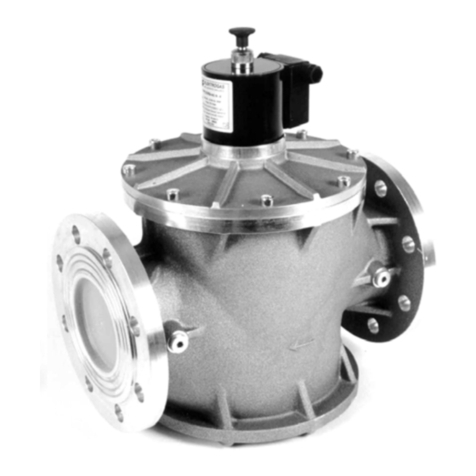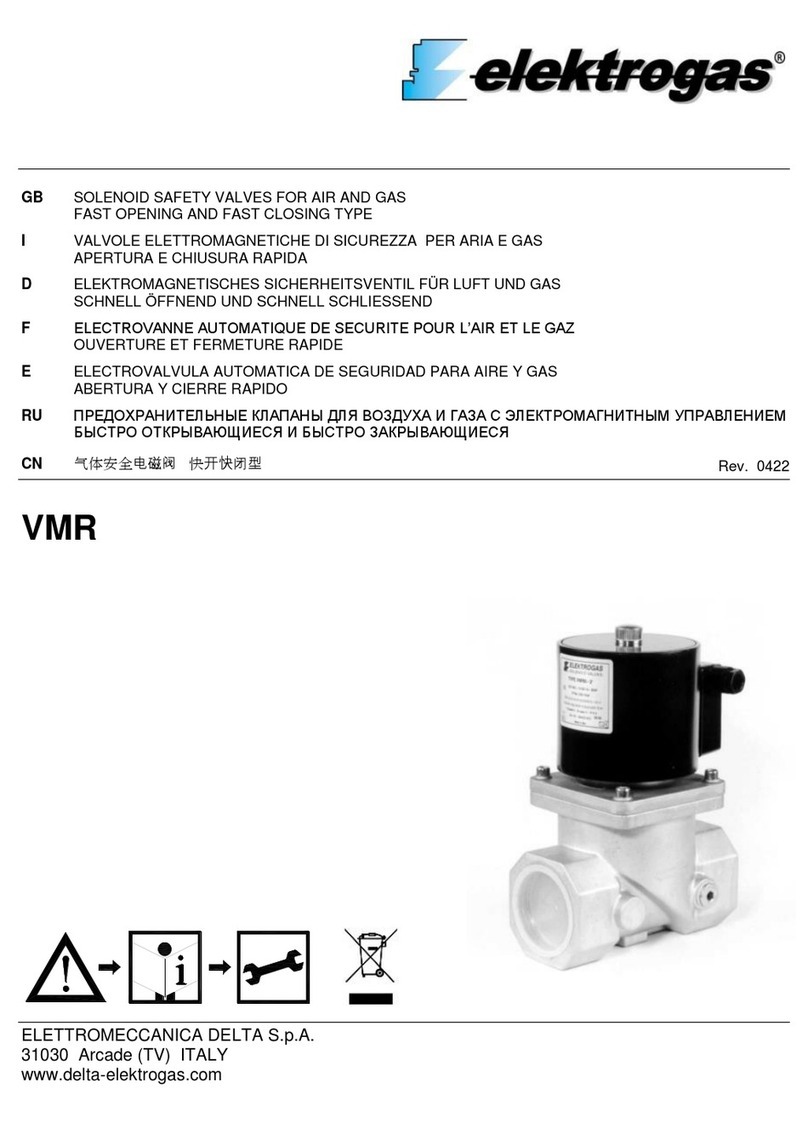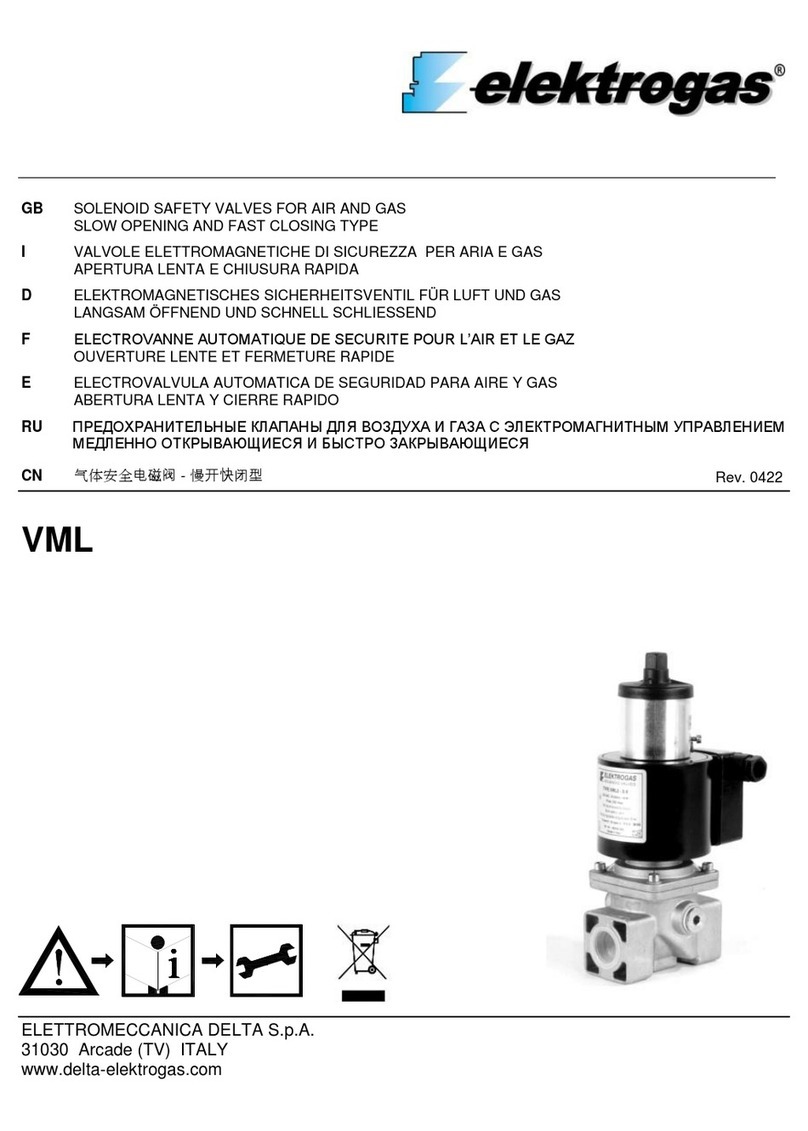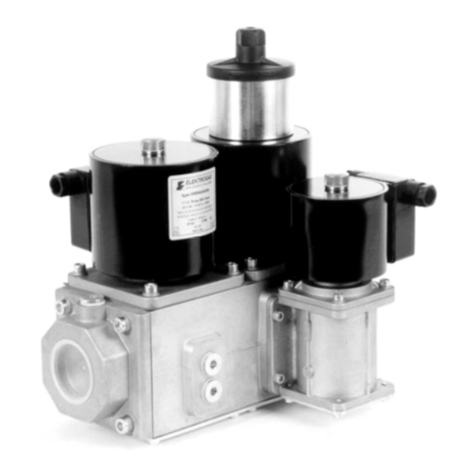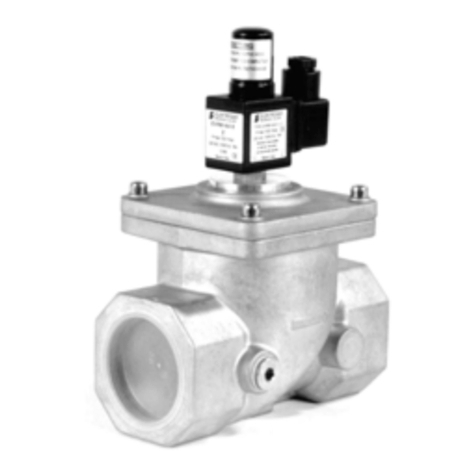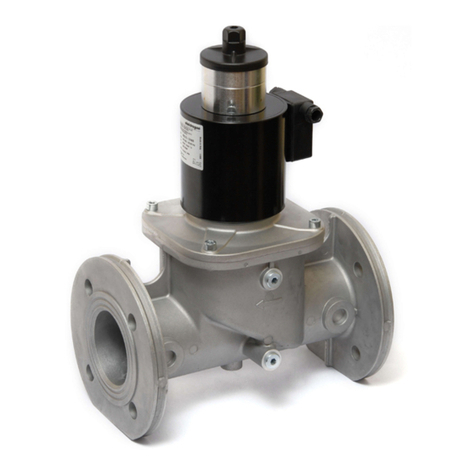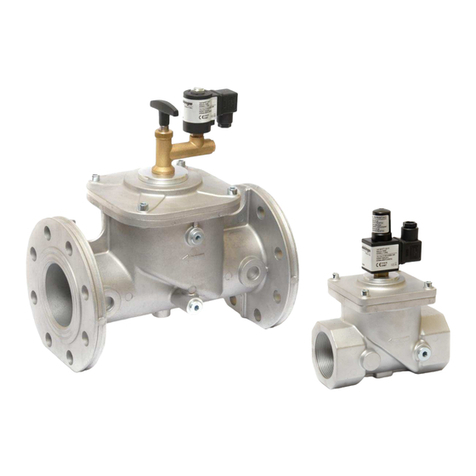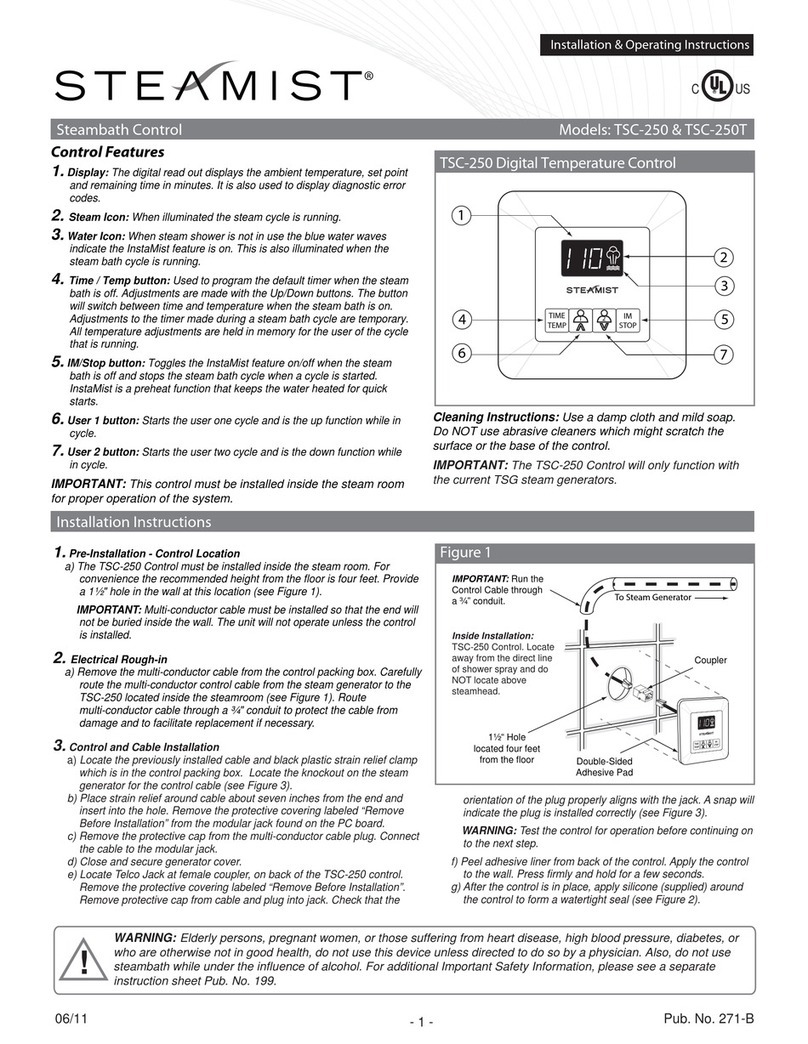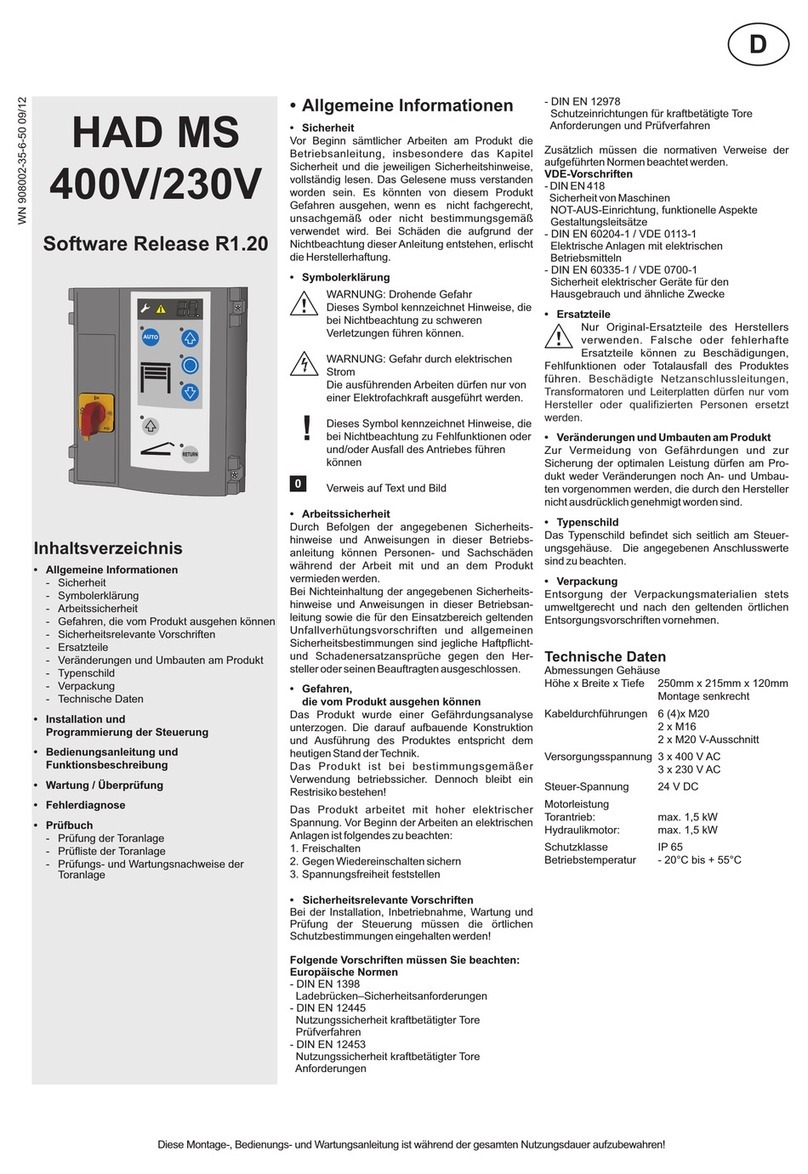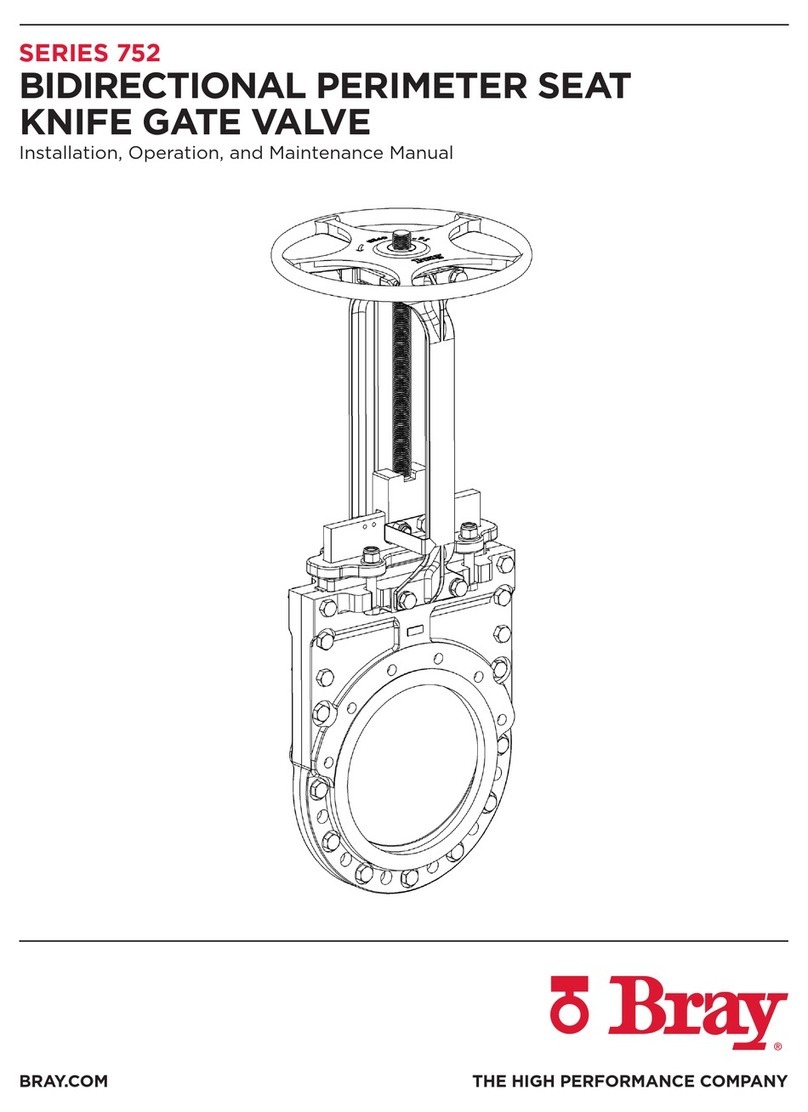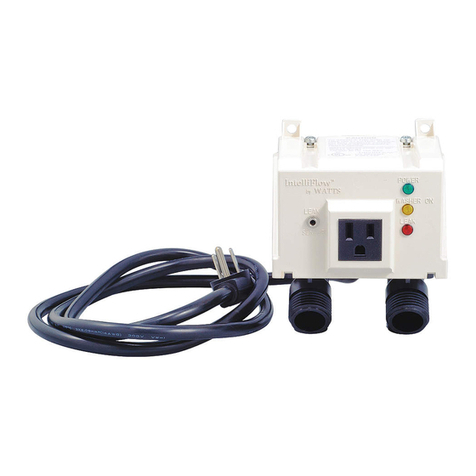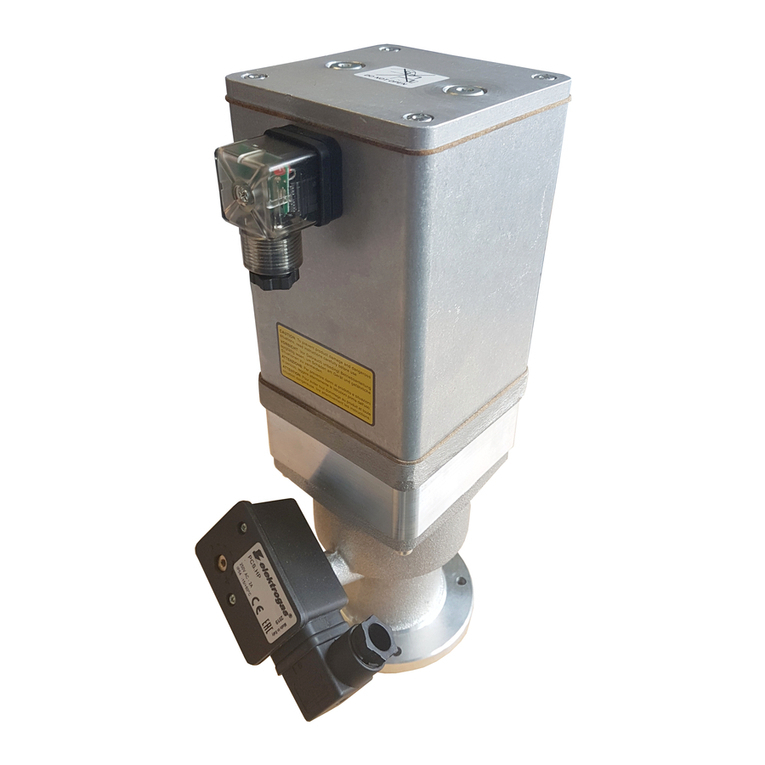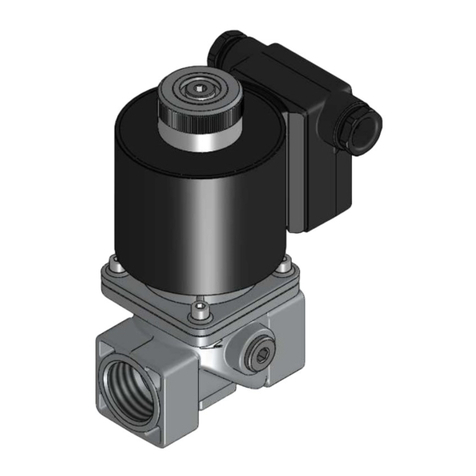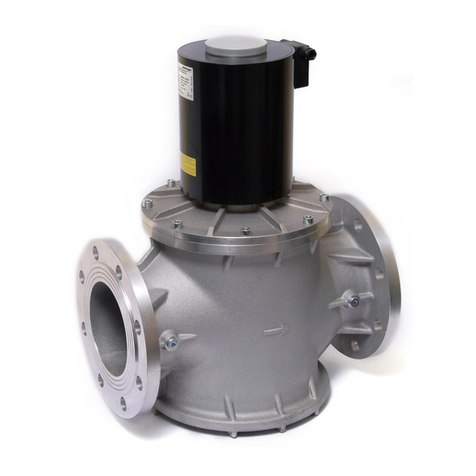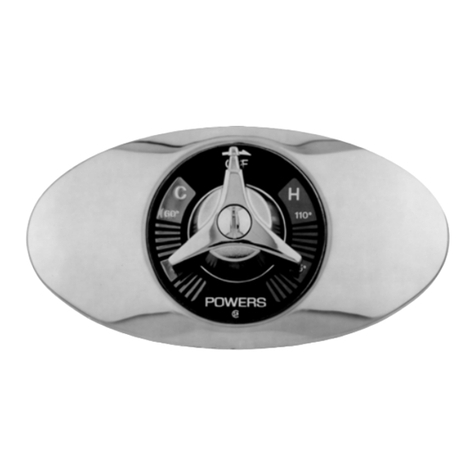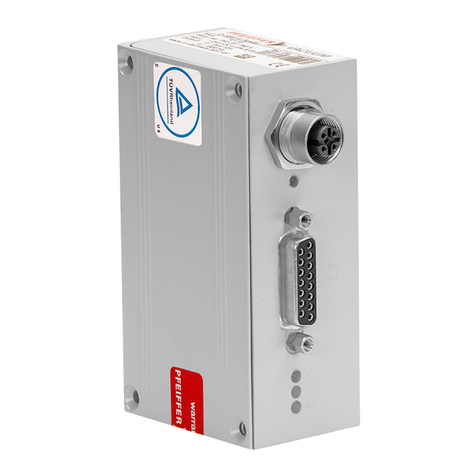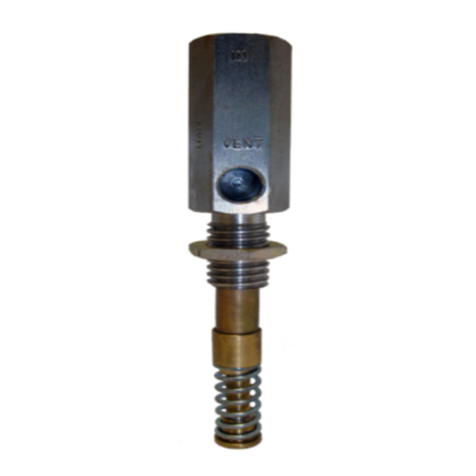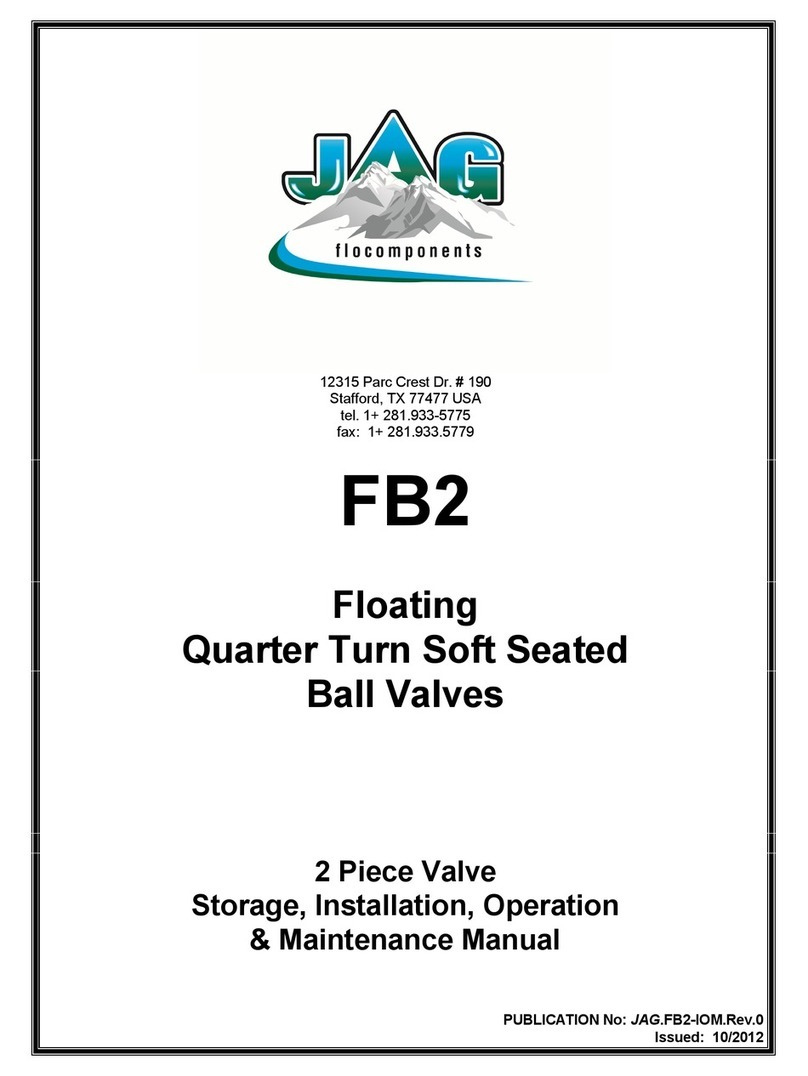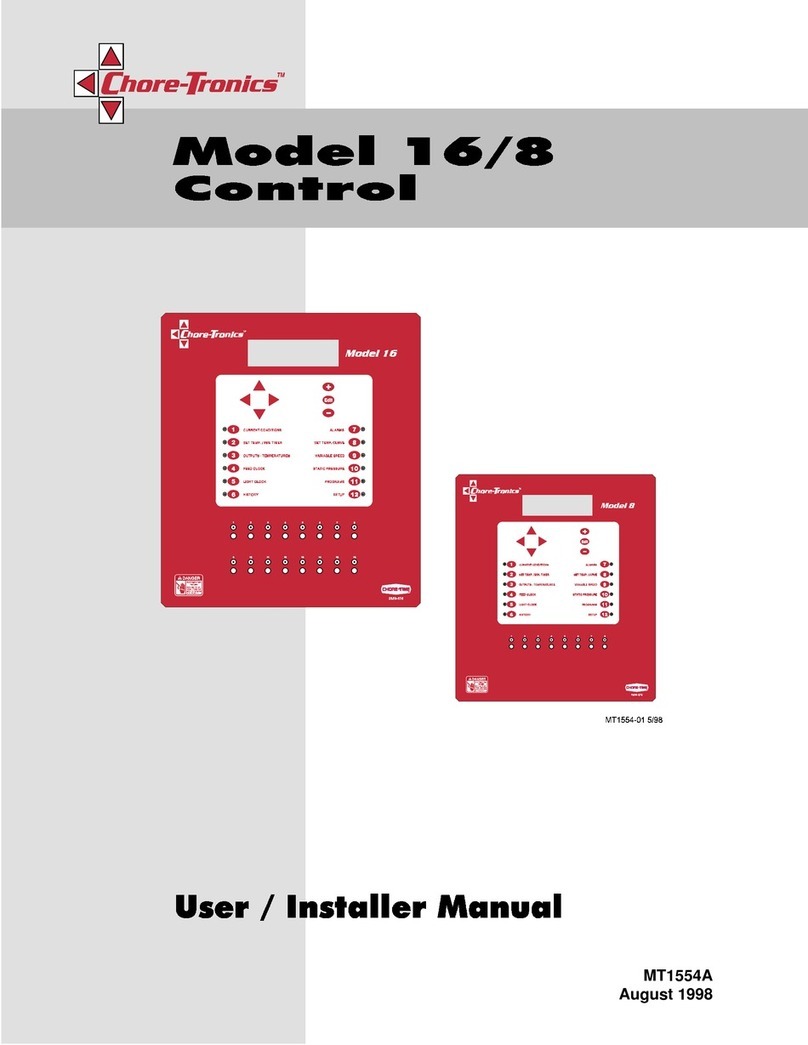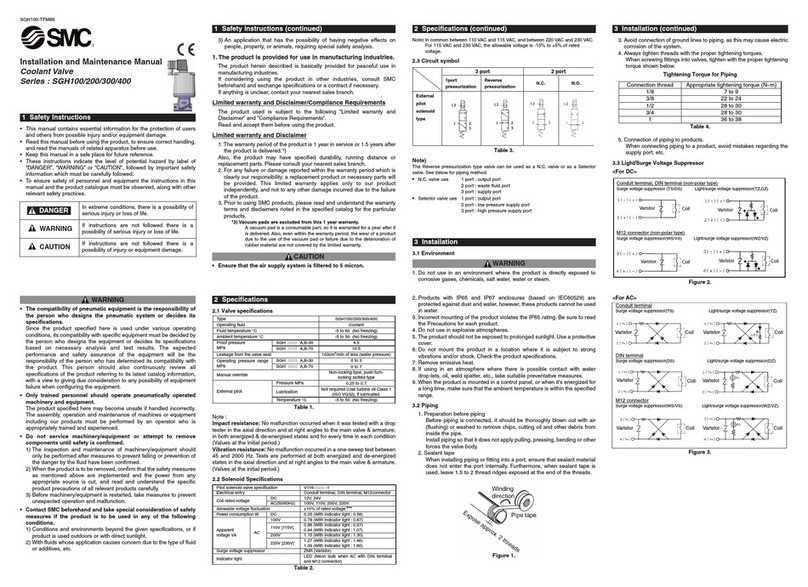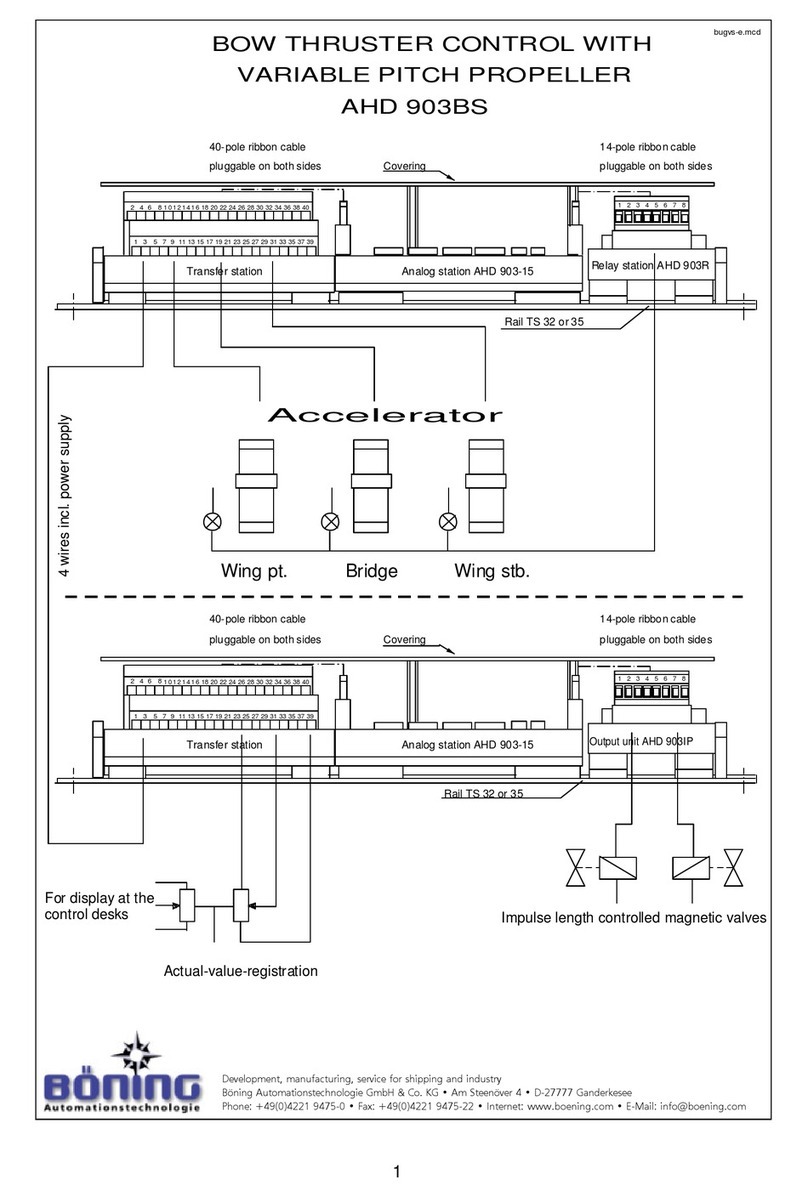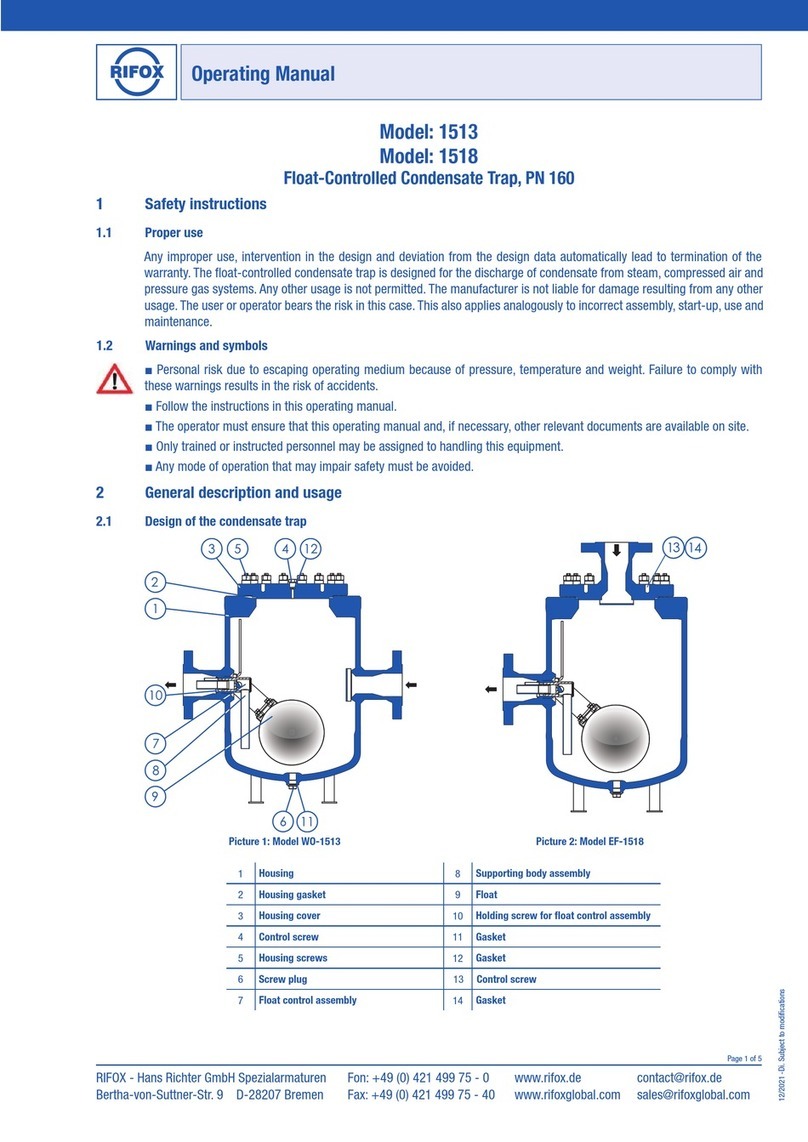
3Printed in Italy - EE162/0704
3- Operation
The VML type valve is a safety shutting device using
auxiliary power supply.
When it is de-energized, the spring pushes on the seal
disc, keeping the gas passage closed. Now, the inlet
chamber is under the gas line pressure, and it forces on
the disc too, improving the seal.
When the coil is powered the valve opens rapidly or
slowly, against the strength of the spring and gas
pressure. The rapid stroke may be adjusted using the
regulating screw on the top (see the Service Instruction
Section), to adjust the initial gas flow. Main flow and
opening time can be adjusted also.
If the power supply is shut off, the valve rapidly closes,
interrupting the gas flow.
4- Accessories
A fine mesh filter is provided, to prevent dirty
contamination of the seal seat. However, an external
strainer must be installed upstream of the valve.
Inlet pressure area is provided with bilateral G1/4"
gauges, to connect min/max adjustable pressure
switches, leakage tester or other gas equipments.
Flanged models are provided with gauges in the outlet
chamber too
On request, valves are supplied with a G1/8” connection
on the bottom, to installed a closed position indicator
micro switch (from 3/4" to 3"). An adapting rod is
provided too.
5- Coil features
The continuous service (100% ED) causes inevitable coil
heating, depending of working environment. This
situation is absolutely normal and has not to worry. To
improve the coil cooling, install the valve allowing free air
circulation.
The models from 1"¼ up to 3" are provided with a power
saving electronic device. It has two stages of operation:
full power is supplied to the coil while the valve is
opening; low power is supplied while the valve is
opened.
Coil and terminal box are provided with suitable gaskets,
to avoid water and dirty contamination (see the Service
Instruction Section).
Fig. 2
6- General information
Backpressure sealing is compliant with the Class A:
the maximum backpressure admitted, with leakage
within the EN161 requirements, is 150mbar.
Maximum torsional stresses admitted are compliant
with the Group 2 of the EN161 standard.
Recommended testing pressure is 1500 mbar Max.
All components are design to withstand any
mechanical, chemical and thermal condition
occurring during typical service.
Effective impregnation and surface treatments has
been used to improve mechanical sturdiness,
sealing and resistance to corrosion of the
components.
Valves are suitable for use with air and non-
aggressive gases included in the 1, 2 and 3 families
(EN 437).
Materials in contact with gas:
•Aluminium
•Brass
•Stainless steel
•Plated steel
•Anaerobic adhesive
•Nitrile rubber (NBR)
•Polytetrafluoroethylene (PTFE)








